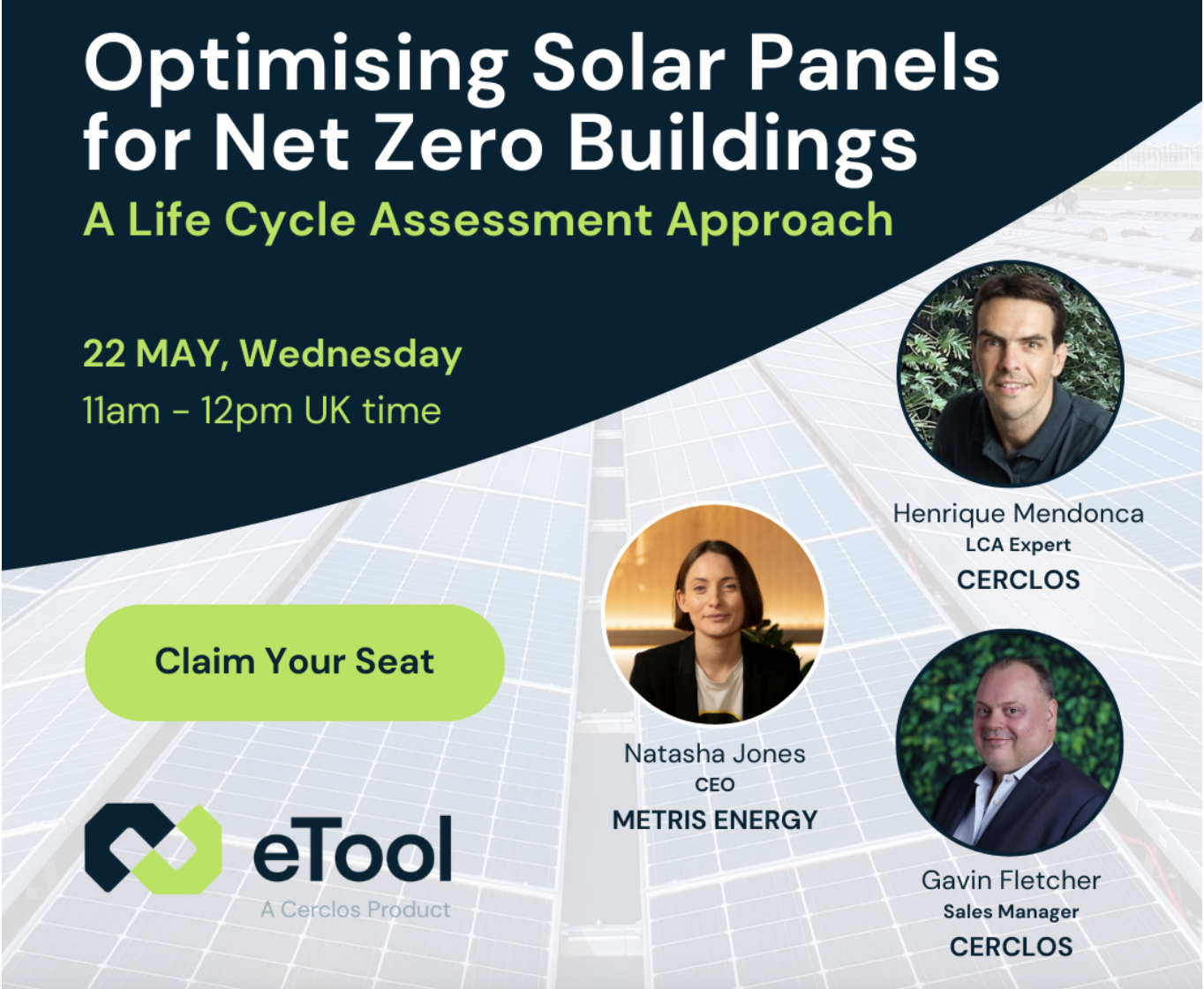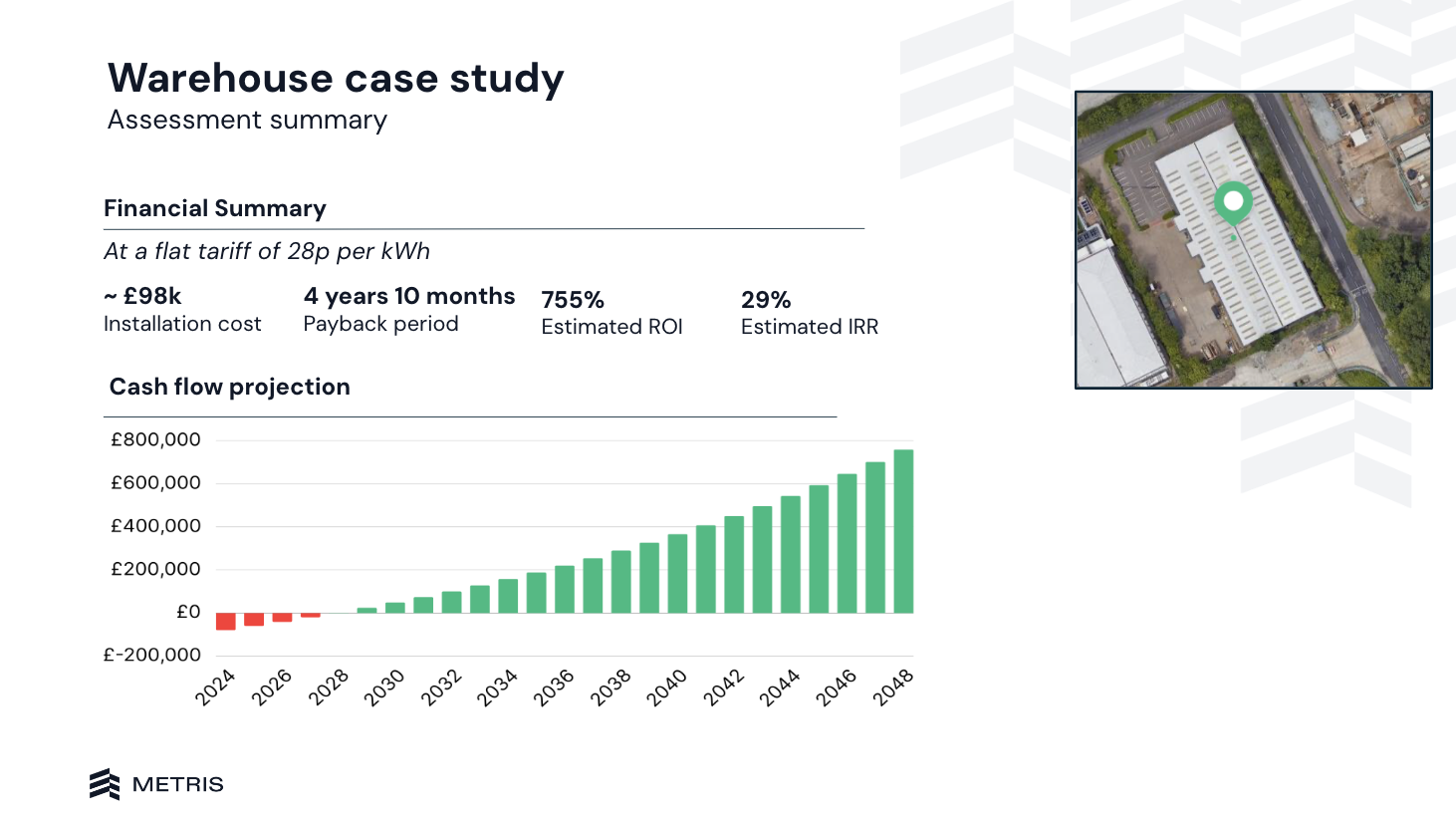Webinar highlights | Optimising solar for net zero buildings: A lifecycle assessment approach
By: Holly Homewood

If the UK is to reach its Net Zero goal by 2050, the commercial real estate industry needs to not only think about operational carbon, but whole life carbon too, and have a comprehensive understanding of how to reduce it.
We joined a webinar with Cerclos, a world-leading whole life carbon software provider, to explore the impact of installing a solar system on the embodied and whole life carbon of a commercial building.
If you’d like to watch the full webinar, you can do so here. If you’re short on time, we cover the key takeaways in this blog post.
What is whole-life carbon?
Whole life carbon is the combined total of embodied carbon - the emissions generated from the materials used in the construction, repairs, refurbishment and demolition of a building - and operational carbon - the emissions generated from the day-to-day running of a building.
Embodied carbon is split into three phases: upfront, in-use and end-of-life. Upfront refers to the emissions generated from the construction of a building, including producing materials and transportation, in-use refers to maintenance and repairs, and end-of-life refers to the demolition of the building including transportation, waste processing and disposal.
Why should I consider solar?
Firstly, the market trends alone provide a strong argument for solar:
Installation price has dropped by 70% with a surplus in panel manufacturing, making payback periods more attractive.
68% of UK pension funds have a net zero target and will be investing in solar.
In 2030 there will be an update to the EPC regulations, with all rented property needing to have an EPC rating of B or above.
But, if you design your system correctly, your business can reduce carbon emissions, as well as reap financial benefits.
Real-world example of the carbon impact of installing solar
To demonstrate the impact solar can have on whole life carbon we used a 2839m² warehouse based in Kent and built from concrete and structural steel, and analysed it over a 25 year period (typical length of solar panel warranty).
The whole life carbon of the warehouse without solar PV came to 878kg CO₂e/m². This was made up of 597 kg CO₂e/m² of embodied carbon and 281 kg CO₂e/m² of operational carbon.
With solar PV, embodied carbon increased by 13kg CO₂e/m² but operational carbon was reduced by 176 kg CO₂e/m² having an overall reduction of whole life carbon by 162 kg CO₂e/m².
Whilst 96% of a solar panel is recyclable, it’s worth noting that panel production accounts for 80% of solar project’s embodied carbon. Extending the life of panels by cleaning them and investing in protective measures such as bird control netting, will have a big impact on the whole life carbon of your system.

Real-world example of the revenue impact of installing solar
The solar system in our example has a capacity of 84.5 kWp, at an approximate installation cost of £98k. A typical import tariff of 28p and export tariff of 6.5p, resulting in a 4 year 10 month payback period and a 755% ROI over 25 years.

We based the solar system on an energy optimised roof - something we recommend you do when designing your system. Energy optimised means a system that is designed to suit the energy demands of the business rather than a full roof system that will produce excess energy. If your system produces lots of excess energy, it will result in a longer payback period as the export tariff is considerably lower than the import tariff. For the most accurate read of your energy consumption, we recommend collecting half-hourly meter data.
Key takeaways
Your system will likely increase the embodied carbon of your building but this will be drastically outweighed by the decrease in operational carbon.
The majority of embodied carbon comes from the manufacturing of the individual parts of the panel. Ensuring they last the expected 25 years, by maintaining them and having them cleaned, will have a big impact on the whole life carbon.
For the best financial returns, you should size your system to meet your energy needs, rather than a system that produces excess energy owing to the cheap import tariff impacting your payback period.